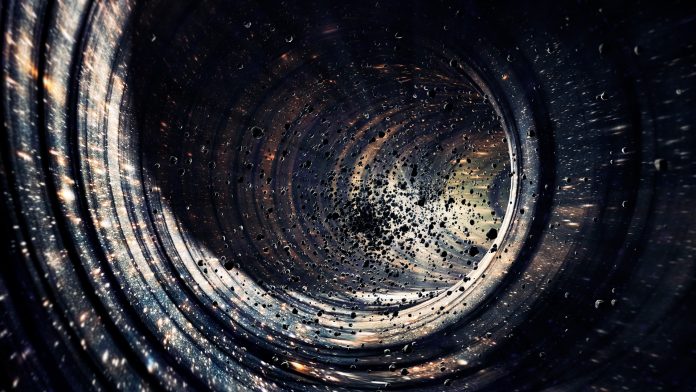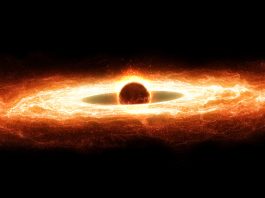Astrophysicists at the European Southern Observatory (ESO) have observed the death of a star as it was sucked into a supermassive black hole in a process called ‘spaghettification’.
The phenomenon, known as a tidal disruption event, is the closest flare of its kind yet recorded, occurring just 215 million light-years from Earth. This recent event was caused when a star travelled too close to a supermassive black hole, shredding it into thin streams of material in a process called ‘spaghettification’. During this process, some of the material falls into the black hole, releasing a bright flare of energy which astronomers can detect.
Tidal disruption events are rare and are usually obscured by a curtain of dust and debris. An international team of scientists, led by the University of Birmingham, UK, were able to study this event in unprecedented detail as the process of spaghettification was detected just a short time after the star was ripped apart.
Using the ESO’s Very Large Telescope and New Technology Telescope, the Las Cumbres Observatory global telescope network, and the Neil Gehrel’s Swift Satellite, the team was able to monitor the flare, named AT2019qiz, over a six-month period as it grew brighter and then faded away.
Lead author Dr Matt Nicholl, a lecturer and Royal Astronomical Society research fellow at the University of Birmingham, said: “The idea of a black hole ‘sucking in’ a nearby star sounds like science fiction. But this is exactly what happens in a tidal disruption event. We were able to investigate in detail what happens when a star is eaten by such a monster.”
Observations of this phenomena were conducted in ultraviolet, optical, X-ray and radio light and revealed, for the first time, a direct connection between the material flowing out from the star and the bright flare emitted as it is devoured by the black hole.
This research helps astronomers better understand supermassive black holes and how matter behaves in the extreme gravity environments around them. The team say AT2019qiz could even act as a ‘Rosetta stone’ for interpreting future observations of tidal disruption events. ESO’s Extremely Large Telescope, planned to start operating this decade, will enable researchers to detect increasingly fainter and faster evolving tidal disruption events, to solve further mysteries of black hole physics and spaghettification.








